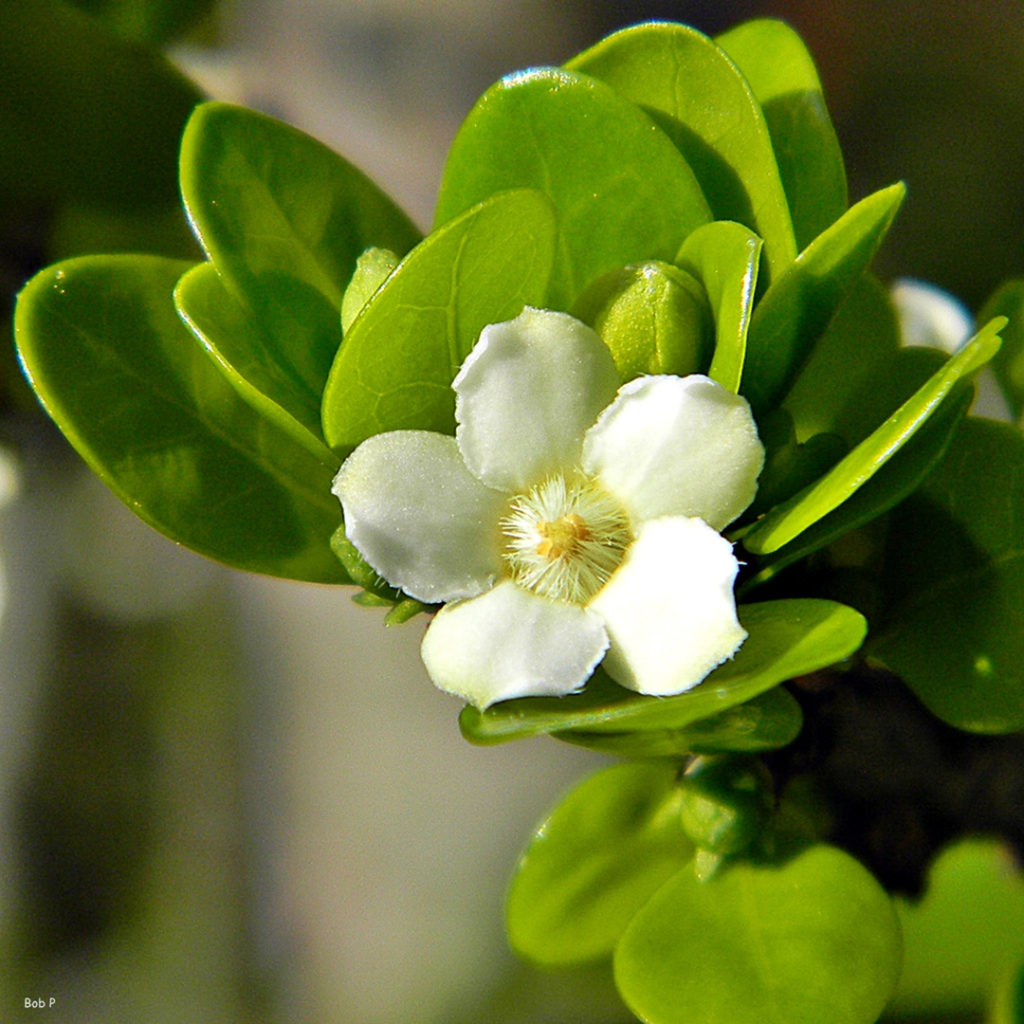
Caribbean Netherlands
White Indigo Berry “Lele”
Randia aculeata

General Description / Cultural Significance
Randia aculeata is a small tree of about 6 to 13 feet high, of the Rubiaceae family. Locally this tree is called Lele, Palu di lele, Rabu di Kabai or Wakura. It is a tree that also appears in Florida and in northern South America.
This tree has beautiful white flowers with a strong fragrance. This tree has economic and cultural values as its wood is used by the local people for stirring delicious guiambo (okra soup) and kadushi (cactus soup). This stirring act is called locally by the name Lele. Besides this, the fruits of the tree are sometimes eaten by the local people.
The berries are edible and used to create a blue dye, but be warned that they also turn your tongue blue. The good news is they are also used to treat dysentery. The latex produced by the plant has been traditionally used to control bleeding.
Climate Change/Conservation Status
The predictions for climate change effects in The Caribbean Netherlands are quite dire. The marine ecosystems surrounding the islands are especially vulnerable to increasing ocean temperatures and acidification. However, the small and crescent-shaped desert island of Bonaire is in the process of demonstrating to the world how to save its coral reefs and itself as the reefs are essential to both the health of the ocean and human survival.
Corals—hundreds of structures ranging from brain coral and Staghorn to fan and star shapes—are soft-body creatures that secrete a calcium carbonate skeleton and survive off of plankton and photosynthesis. Over the past forty years, the Bonaireans have enacted a marine maintenance and restoration system that is a model for the rest of the Caribbean. As a result of this work, Bonaire remains an exemplary dive and snorkel site, whereas most other Caribbean reefs are plagued with bleaching. Bonaire’s roadsides are marked with yellow painted rocks identifying sixty-two dive sites in the waters surrounding the island. To maintain this diver’s paradise, Reef Renewal Bonaire and the marine park monitors and reports on the corals regularly. Together they tackle any incidents that arise concerning the marine environment. Terrestrial ecosystems will also be impacted by the increasing storms and associated wind and rainfall, in addition to sea level rise and saltwater infiltration threatening mangroves and seagrass beds.
Alternate Names
Lele
Sources
Burleigh, N., 2019. Nurturing Coral and the Soul. Waterloo Region Record. [website]
Deane, n.d. White Indigo Berry Has A Dark Side. Greene Deane. [website]
Debrot, A., & Bugter, R., 2010. Climate change effects on the biodiversity of the BES islands. Alterra Wageningen UR. [website] ISSN: 1566-7197
DNCA, 2016. Climate change impacts within the Dutch Caribbean. Dutch Caribbean Nature Alliance. [website]

